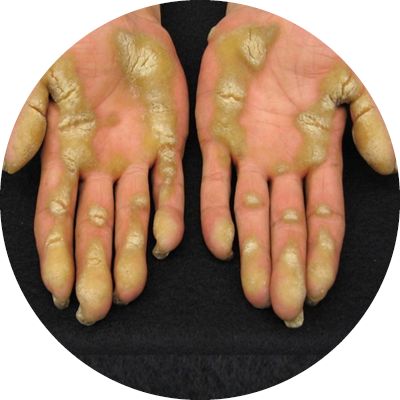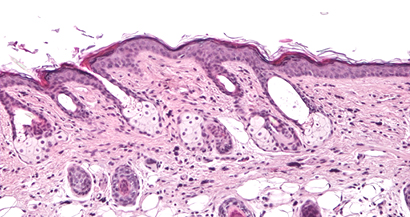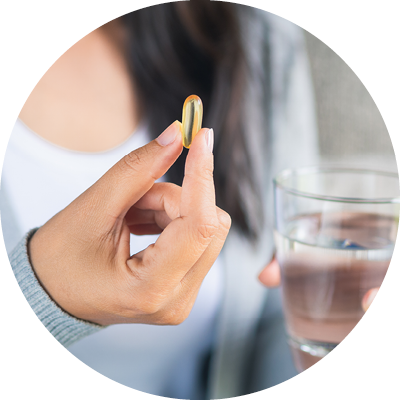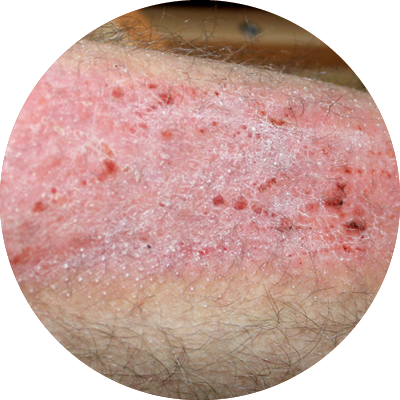Palmoplantar Keratodermas
Severe Rare Skin Diseases
Lichen Simplex Chronicus

The Palmoplantar Keratodermas (PPKs)
Topical cream for the treatment of Palmoplantar Keratodermas (PPKs), a group of rare skin conditions with great unmet need.
Group of rare skin conditions that result from various mutations in several genes. PPKs are characterized by thickening of the skin on the palms and soles leading to great discomfort, itch and pain. The PPKs include diseases such as Punctuate PPK, Pachyonychia Congenita (PC) and Mal de Meleda, all of which have no approved treatment. Kamari’s TRPV3 inhibitors, if approved, may be promising treatment for these conditions.
Kamari pharma is collaborating with PC project to raise awareness for PC and other PPK related conditions. The PC project is a dedicated organization to find effective treatments and a cure for PC. www.pachyonychia.org
photograph courtesy of the PC Project
Placebo


Response rate
skin normalization according to histology
Treated with KM-001 1%


Response rate
skin normalization according to histology
Effect of Tested Treatments on Skin
Morphology Normalization of DS-Nh mice

Advanced oral treatment for severe Keratoderma and Ichthyosis
Olmsted syndrome and severe Palmoplantar Keratoderma
Olmsted Syndrome is an ultra rare genetic disorder, characterized by the development of severe and sometimes mutilating hyperkeratotic plaques, diffuse baldness (alopecia), extreme itch (pruritus), and debilitating pain.
‘Gain-of-function’ mutations in the TRPV3 gene lead to a constant activation of the TRPV3 channel, thus overflow of Ca²⁺ skin cells.
Ichthyosis
The ichthyoses are disorders of keratinization or cornification. They are characterized by generalized scaling of the skin in varying severity with or without erythroderma. Most ichthyols disease forms are inherited but acquired forms can develop in the setting of certain cancers, autoimmune or infectious disease, or nutritional deficiency.
Harlequin Ichthyosis
One of the most severe of the Ichthyoses is Harlequin Ichthyosis (HI). Presenting at birth, infants born with this ultra rare condition are covered in thick plate-like scales of skin. HI is often fatal, and patients die due to complications of sepsis, dehydration, or respiratory failure. There are currently no treatments available for those who suffer from HI, other than supportive care.

Lichen Simplex Chronicus Severe Itch
A topical cream is developed for the relief of itch associated with Lichen simplex chronicus (LSC).
A chronic pruritic condition characterized by areas of thickened skin resulting from repeated rubbing or scratching.
It may present with associated dryness, scaling, or redness (erythema). Commonly affected areas include the neck, ankles, extremities, scalp, and genital region. Currently, there is no effective therapy for LSC related itch, which negatively impacts the quality of life for approximately 12% of the adult population.
2:1
WOMEN
MORE COMMON IN ASIANS
30-50
HIGHEST PREVALENCE: 30-50 YEARS OF AGE
PERSONAL OR IMMEDIATE FAMILY HISTORY OF ATOPY
12%
12% OF GENERAL POPULATION
